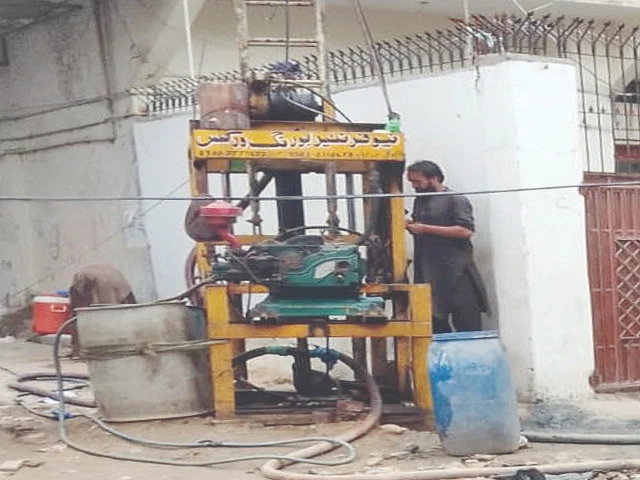Water boring heightens seismic threat in Karachi
Excessive underground water extraction has led to land subsidence, amplifying the risk of destructive earthquakes

Amidst the city's never ending water crisis, underground water boring has emerged as a crucial mode of supplying the survival necessity. However, the popular practice has come under scrutiny as experts debate its correlation with an unprecedented surge in earthquakes hitting Karachi.
According to Chief Meteorologist Ameer Haider Laghari, since June 1st, areas in the eastern part of Karachi including Landhi, Malir, Korangi, and Quaidabad, have experienced 57 tremors with magnitudes ranging from 1.5 to 3.8 on the Richter scale. Although these tremors were minor, their frequency has caused significant fear and anxiety among residents.
In these areas, underground water extraction through boring has increased significantly over the years as a result of which the land in these areas has reportedly subsided. While there is no scientific evidence directly linking the recent earthquakes and land subsidence to boring and construction activity, it is a hypothesis requiring comprehensive study.
Dr Adnan Khan from the Geology Department at the University of Karachi explained that in many areas of Karachi, particularly Landhi, Korangi, and Malir, the lack of a regular water supply system had led residents, industries, and RO plants to rely heavily on underground water extraction. "Land in areas like Landhi, Korangi, Malir, Defence, and North Karachi has subsided by 15 centimeters and is sinking at an annual rate of 1.5 centimeters," revealed Dr Khan.
Dr Nauman Ahmed, Professor at the NED University, claimed that although earthquakes occured on a large scale and could not be definitively linked to boring, excessive extraction of underground water was an unnatural process hence areas where boring is prevalent have likely developed weakened underground structures.
"As water is extracted from beneath the surface, a void is created, which makes the natural underground position vulnerable, weakening the foundations of houses. These factors increase the risk of structural damage in these areas during earthquakes or otherwise," said Dr Ahmed, who urged the government to conduct a detailed survey of the affected areas, identifying the damage caused by boring, and taking steps to address the situation.
"Scientific research suggests that tectonic plate movement at local fault lines is causing land subsidence. However, it is under observation that excessive underground water extraction is occurring in areas like Landhi, Malir, and Korangi, where earthquakes are also being recorded, and the land is sinking. A detailed study is required to determine the exact cause," added Dr Khan.
Dr Masood Rafi, Chairman of the Earthquake Engineering Department at NED University, identified two major causes of land subsidence in Karachi: the construction of small and large buildings and the extensive use of underground water.
"Due to the water crisis in many areas, residents have resorted to alternative methods, such as boring, to extract underground water. Additionally, reverse osmosis (RO) plants have been established at many locations for drinking water, exacerbating the depletion of underground reserves and creating voids beneath the surface. The weight of newly constructed buildings further increases underground pressure, contributing to land subsidence. Therefore, it is imperative to halt underground water extraction to prevent further damage," opined Dr Rafi.
On the other hand, Dr Khan warned that although Karachi's local fault lines were not highly dangerous, the city was at risk from surrounding tectonic plates, especially those in India and Balochistan.
"Strong earthquakes in these regions could cause destruction across Karachi, which is part of the Indian tectonic plate. About 110 kilometers west of the city lies a point where three plates: the Indian, Eurasian, and Arabian intersect. The Arabian plate subducts beneath the other two from the south. If earthquakes occur in this region, their effects could also impact Karachi," warned Dr Khan.



















COMMENTS
Comments are moderated and generally will be posted if they are on-topic and not abusive.
For more information, please see our Comments FAQ